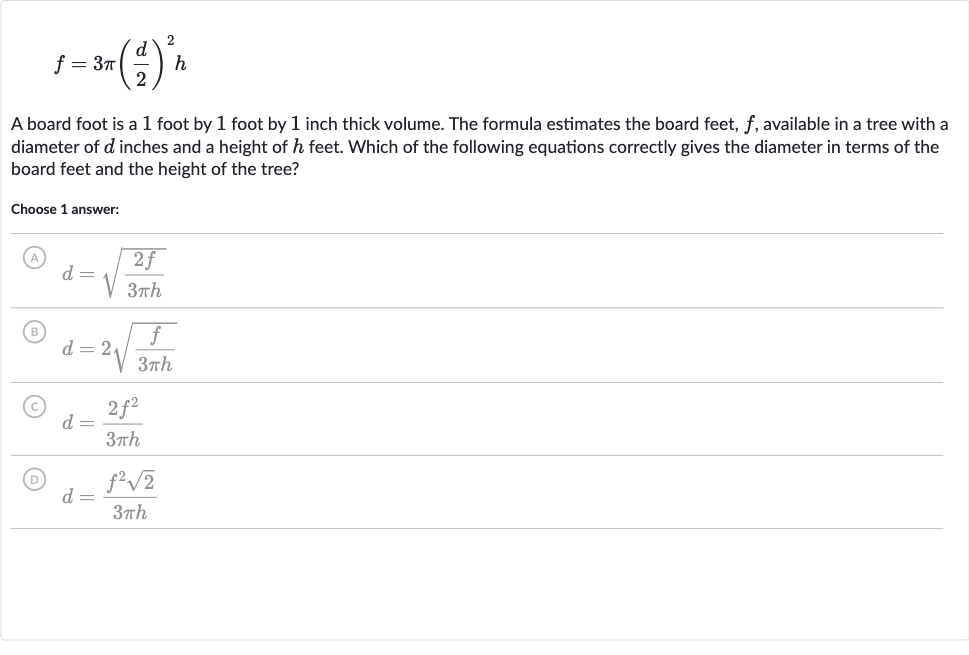AI tutor
Welcome to Bytelearn!
Let’s check out your problem:

A board foot is a foot by foot by inch thick volume. The formula estimates the board feet, , available in a tree with a diameter of inches and a height of feet. Which of the following equations correctly gives the diameter in terms of the board feet and the height of the tree?Choose answer:(A) (B) (C) (D)
Full solution
Q. A board foot is a foot by foot by inch thick volume. The formula estimates the board feet, , available in a tree with a diameter of inches and a height of feet. Which of the following equations correctly gives the diameter in terms of the board feet and the height of the tree?Choose answer:(A) (B) (C) (D)
- Isolate : We have the original formula: . We need to solve for .
- Solve for : First, divide both sides by to isolate on one side: .
- Solve for d: Next, take the square root of both sides to solve for : .
- Solve for d: Next, take the square root of both sides to solve for : . Finally, multiply both sides by to solve for d: .
More problems from Volume of cubes and rectangular prisms: word problems
QuestionGet tutor help
QuestionGet tutor help
QuestionGet tutor help
QuestionGet tutor help
QuestionGet tutor help
QuestionGet tutor help
QuestionGet tutor help
QuestionGet tutor help
QuestionGet tutor help
